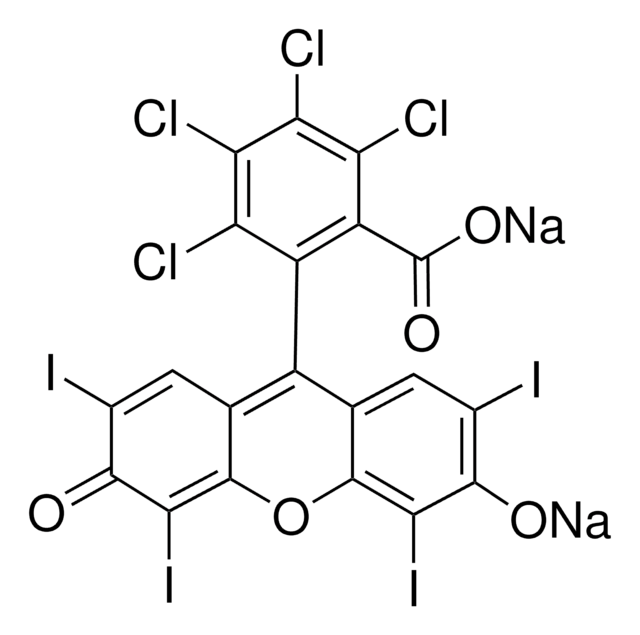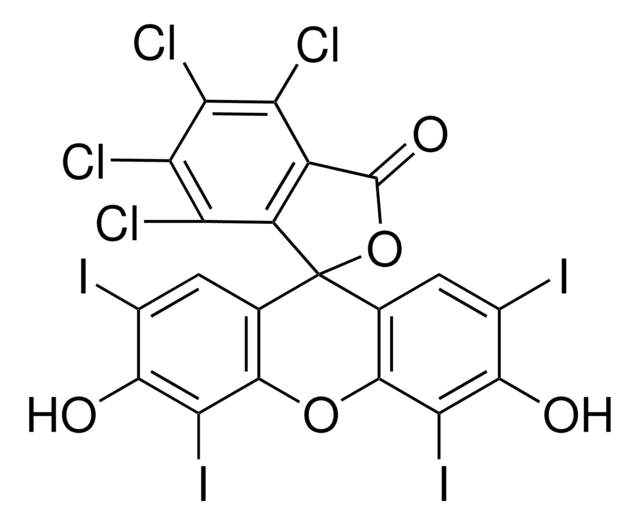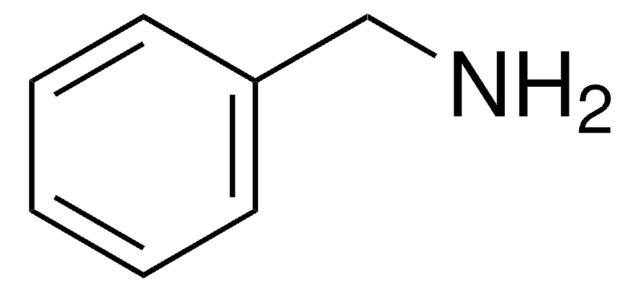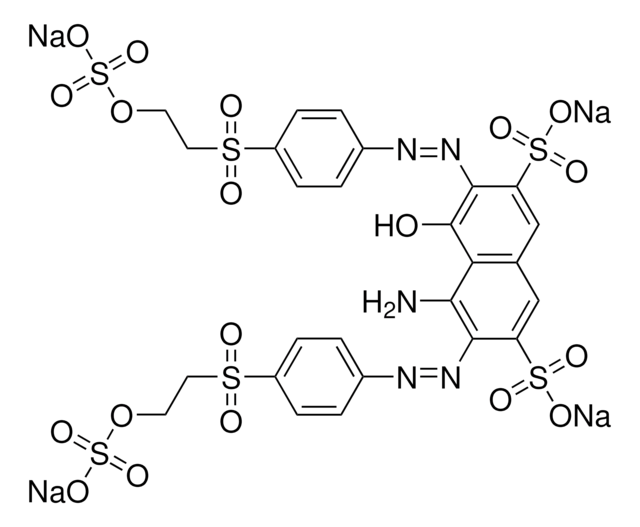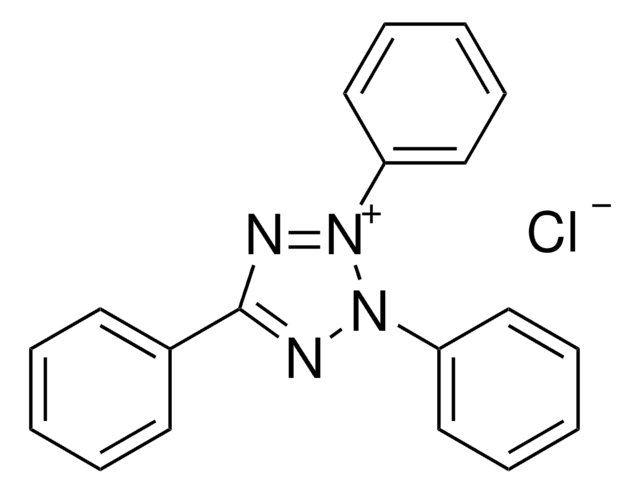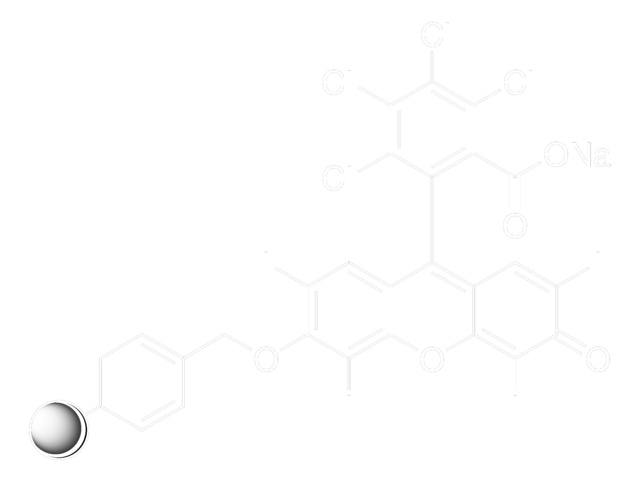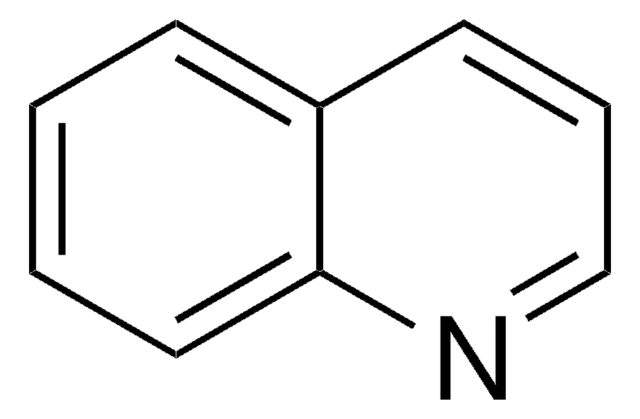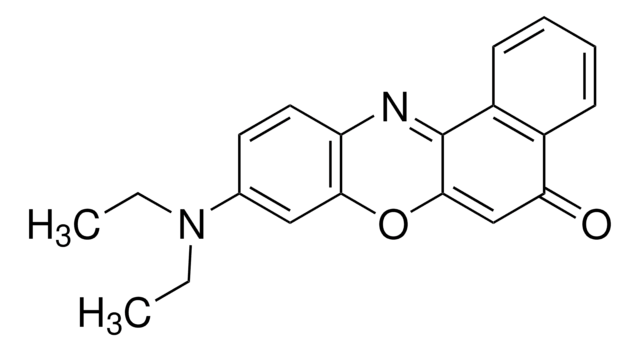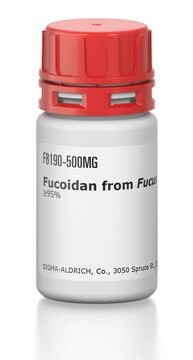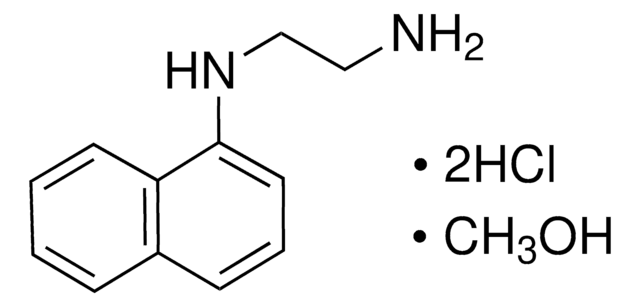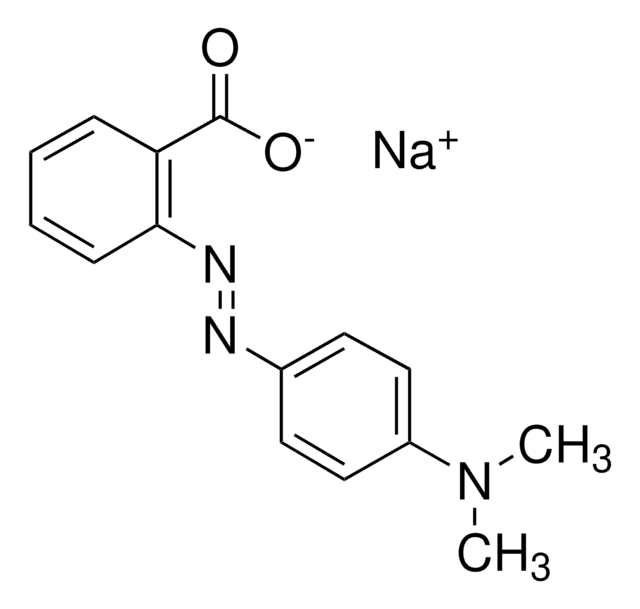198250
Rose bengal
certified by the Biological Stain Commission, Dye content ≥80 %
Sinônimo(s):
4,5,6,7-Tetrachloro-2′,4′,5′,7′-tetraiodofluorescein disodium salt, Acid Red 94, Bengal Rose B sodium salt, Rose Bengal sodium salt
About This Item
Produtos recomendados
grau
certified by the Biological Stain Commission
Nível de qualidade
forma
powder
composição
Dye content, ≥80%
cor
dark violet
solubilidade
H2O: 1 mg/mL
λmax
548 nm
ε (coeficiente de extinção)
≥90000 at 546-550 nm at 0.008 g/L
aplicação(ões)
diagnostic assay manufacturing
hematology
histology
temperatura de armazenamento
room temp
cadeia de caracteres SMILES
[Na+].[Na+].[O-]C(=O)c1c(Cl)c(Cl)c(Cl)c(Cl)c1C2=C3C=C(I)C(=O)C(I)=C3Oc4c(I)c([O-])c(I)cc24
InChI
1S/C20H4Cl4I4O5.2Na/c21-10-8(9(20(31)32)11(22)13(24)12(10)23)7-3-1-5(25)16(29)14(27)18(3)33-19-4(7)2-6(26)17(30)15(19)28;;/h1-2,29H,(H,31,32);;/q;2*+1/p-2
chave InChI
UWBXIFCTIZXXLS-UHFFFAOYSA-L
Procurando produtos similares? Visita Guia de comparação de produtos
Categorias relacionadas
Descrição geral
Aplicação
- Conn′s technique for bacteria in soil and Kreyberg′s stain for keratin and mucus
- counterstaining hematoxylin
- staining cellular inclusions, together with Bismark brown
Código de classe de armazenamento
11 - Combustible Solids
Classe de risco de água (WGK)
WGK 3
Ponto de fulgor (°F)
Not applicable
Ponto de fulgor (°C)
Not applicable
Equipamento de proteção individual
Eyeshields, Gloves, type N95 (US)
Escolha uma das versões mais recentes:
Já possui este produto?
Encontre a documentação dos produtos que você adquiriu recentemente na biblioteca de documentos.
Os clientes também visualizaram
Protocolos
Separation of Tartrazine; Amaranth; Indigo carmine; New Coccine; Sunset Yellow FCF; Allura Red AC; Fast Green FCF; Erioglaucine disodium salt; Erythrosin B sodium salt; Phloxine B; Rose bengal
Nossa equipe de cientistas tem experiência em todas as áreas de pesquisa, incluindo Life Sciences, ciência de materiais, síntese química, cromatografia, química analítica e muitas outras.
Entre em contato com a assistência técnica